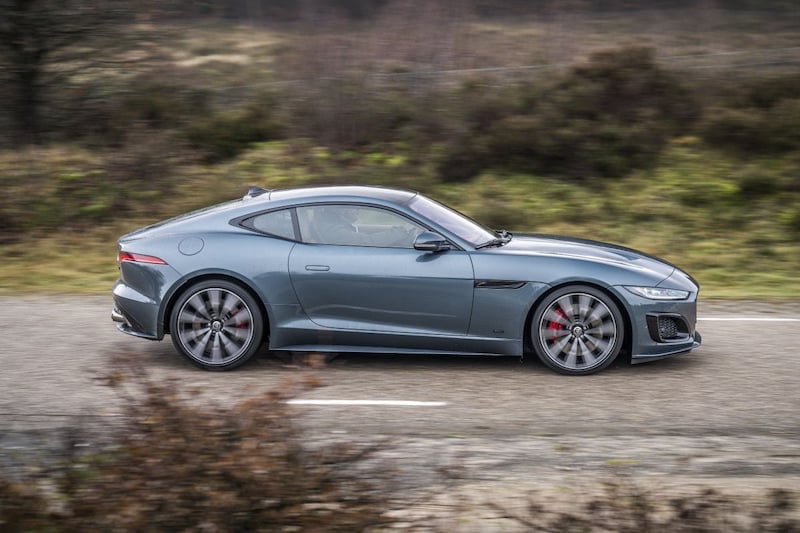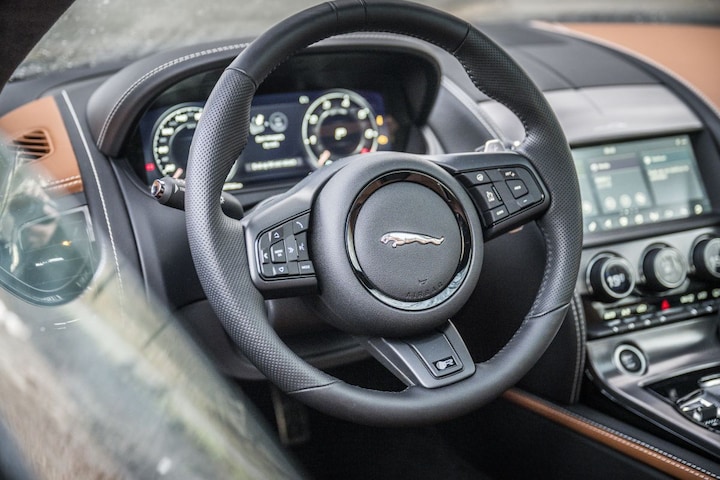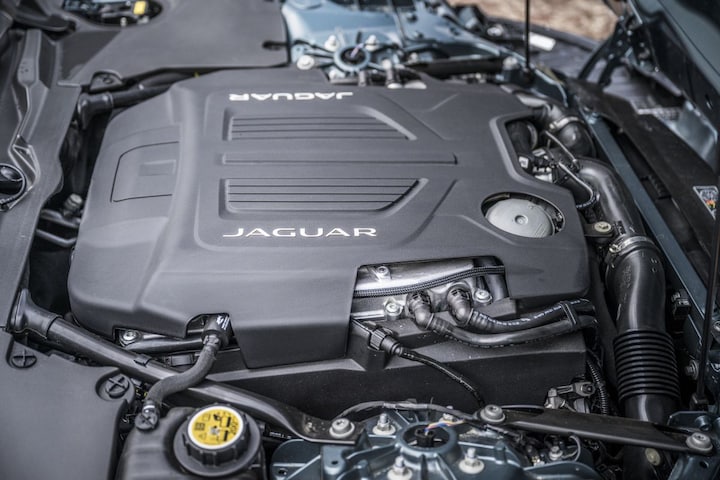Saying goodbye to an icon

For many, the Jaguar F-Type will be one of the most sensational sports cars of the past decade. The fact that the model disappears will certainly hurt a bit. And so we treat ourselves to the Jaguar F-Type R75 again.
When you sink into the deeply nestled driver’s seat of the Jaguar F-type, you still wallow in that visceral sense of rightness. This is how a Jaguar should be, and an F-type especially: low, sporty and equipped with an enormous hood, which houses an equally enormous combustion engine. Whatever else you think about those core values, the Jaguar F-type is unmistakably a classic Jaguar. They will no longer make them like this in the short term, because the Jaguar F-type is going out of production and like many other brands, the British noble brand is also on its way to a fully electric future. But before that happens, the F-type is waving goodbye with a festive edition: the R75. This refers to the number of years that Jaguar has been building sports cars with a combustion engine and is actually a nice, heavily decorated version.
Beating heart of the Jaguar F-type R75
The beating heart of the R75 is formed by the only engine that belongs in the Jaguar F-type: the 5.0-liter V8 with supercharger. That engine was supplied in several power variants during the life of the sports car and for the swing-out model, only the best is of course good enough. That means 575 hp and 700 Nm of torque, good for a top speed of 300 km/h and a 0-100 sprint in 3.7 seconds. Much more than the dry figures, however, it is the way of working that makes the 5.0 such a popular power source. In every part of the tachometer scale, the engine emphasizes how unique it is. From a dark rumble at the bottom via a bark in the midrange accompanied by the supercharger to a screaming last 1,500 rpm. What a masterful block and how easy the achievements come. The fact that the turbo ultimately won out over the mechanical compressor is easy to explain from an efficiency point of view, but when it comes to throttle response and character, the supercharger cannot be outdone. And then that roar from the exhaust. The emission-reducing interventions may have dampened the volume somewhat, but the 5.0 cannot be deprived of its sense of drama. It makes little difference that the eight-speed automatic transmission that is attached to it is certainly not the sharpest transmission of the moment. With 700 Nm in the middle range, you can easily afford to be a little too high. And as said: it doesn’t have to go full throttle to be great. Enjoy old-fashioned fun.

You can call it old-fashioned or classic.
Unfortunately, the rest of the F-type also feels a bit old-fashioned. The interior, for example, has remained largely the same since its introduction a decade ago. Well, digital counters and a renewed navigation system were added with the facelift in 2019, but broadly speaking it is ten years old. Compared to the graphic violence that more modern cars present, this looks a bit like an old Atari. Fortunately, there is a lot of leather on board the test car; then it quickly becomes ‘classic’ instead of old. Despite the relatively large external dimensions, the seating position is also quite limitedly adjustable, as is the view outside. We’re not even going to talk about the trunk…
Jaguar F-type is obese
Yet you feel the age of the Jaguar mainly in the chassis. That’s not as negative as you might think. Yes, the F-type remains a remarkably heavy car, especially when you consider that it contains quite a bit of aluminum: 1,855 kilos is certainly not light. For example, a Porsche 911 Turbo weighs about 150 kilos less. That weight can never be completely removed, because especially when you brake hard, the car wants to push through. So instead of magic it away, you have to learn to work with it a little and then it will happen old school character emerges. Where many modern competitors support you both visibly and invisibly with active anti-roll bars and adaptive four-wheel steering and enough computer computing power to mine a bitcoin, the F-type requires you to largely do the work yourself. Moreover, Jaguar is one of the few manufacturers that allows the static balance of the car to lean towards oversteer. In other words: if you take a corner too fast, it is usually the rear axle that throws in the towel first. Knowing that, you can use the mass of the car to turn it. This is not done with the millimeter perfection of a Porsche, but with the flair of a ballroom dancing sumo wrestler. Fortunately, the F-type benefits from four-wheel drive, although it is also from the category ‘if you need it, you have to learn to drive better’. Eventually the front axle comes to help you, but not before the rear tires are already smoking. Delicious.

If only you could hear him in the pictures.
Charmer
Even ten years after its introduction, the F-type remains a huge charmer. On a scorecard there are more than enough things to point out where the Jaguar loses out, but in person there are few cars that have as much raw appeal as this one. The fact that the car has to sell for around €200,000 and requires an unlimited fuel card to keep it running apparently does little to change this. A few days after we returned the test car, it was sold…
– Thanks for information from Autoweek.nl